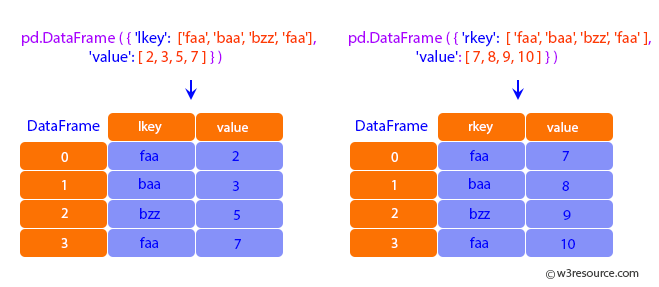
Y=np. Using timedelta64 we can add or subtact date parts. X=pd.offsets.DateOffset(years=1,months=2,days=3,\ Adding Days to a date in a Pandas dataframe. Tm=pd.Timestamp('now') # current timestamp pandas add day to date and the number of day based on another column. Print(tm+pd.offsets.DateOffset(months=2))Īdding Dateoffset to current date and time. We can add or subtract to any Timestamp by using DateOffset. import datetime from import BDay df 'Math Admin Date' + BDay (1) TypeError: cannot use a non.
Pandas add days to date code#
Using the suggestions from Business days in Python, I tried the code listed below.

The data in the column is in the datetime64 ns type. Print(pd.Timestamp(dt)-pd.DateOffset(days=15))# 00:00:00 DateOffset and Timestamp I need to add business days to the dates listed in an existing column in a dataframe. The accessor works on columns of type datetime64 ns and allows us to access the vast amounts of data. This means that we can extract different parts from a datetime object, such as months, date, and more. dt accessor to access different attributes from a Pandas series. Print(pd.Timestamp(dt)-pd.DateOffset(day=15)) # 00:00:00 When working with Pandas datetime values, we can use the.

In second case days=15 we are subtracting 15 days. you can add timedeltas created by totimedelta: df'date2' df'date1' + pd. dates + days.astype('int') TypeError: incompatible type for a datetime/timedelta operation add dates + pd.DateOffset(daysdays) TypeError: DatetimeIndex cannot perform the operation + dates + np.timedelta64(days.
Pandas add days to date series#
Check the sample code below.Ĭompare the two outputs, when we use day=15, we are replacing the day part. dates + days TypeError: cannot operate on a series without a rhs of a series/ndarray of type datetime64ns or a timedelta. We are updating the year part only ( not adding or subtracting )ĭf=df-pd.DateOffset(year=2023) PerformanceWarning: Non-vectorized DateOffset being applied to Series or DatetimeIndex Syntax: datetime.timedelta (days0, seconds0, microseconds0, milliseconds0, minutes0, hours0, weeks0) Example 1: The following Python code is used to add days to a date in Python. After that, I used timedelta function and in the parameter, We have passed a value that how many days want to add (This value can be any integer). Hour minute second microsecond nanosecond We have created a variable called currentdate which holds the current date, and then prints that current date.

Note that year ( used above ) is not same as years. We can replace the parts by using different set of keywords. In above code we have added ( or subtracted ) the date and time parts. Similarly we can add microseconds and nanoseconds Replace Pd.DateOffset(hours=2,minutes=50,seconds=43)

Pd.DateOffset(years=2,months=3,days=13) Adding Hours df=df+pd.DateOffset(hours=2) Adding Hours Minutes and seconds df=df+\ Output ( one new column dt_end is added )ĭf=df-pd.DateOffset(days=365) Adding Year df=df+pd.DateOffset(years=2) Adding Months df=df+pd.DateOffset(months=3) Adding Year month and days df=df+\ We can REPLACE part of the date object also.ĭf=df+pd.DateOffset(days=365) if the date format comes in datetime, we can also extract the day/month/year. We can add ( or subtract ) dates from above values by using keywords years, months, weeks, days, hours, minutes, seconds, microseconds, nanoseconds year from a date column and put the values into new columns in Pandas. periods: The number of periods to generate. This function uses the following basic syntax: pandas.daterange (start, end, periods, freq, ) where: start: The start date. Skipping weekends would be pretty easy doing something like this: import datetime def datebyaddingbusinessdays(fromdate, adddays): businessdaystoadd adddays currentdate fromdate while businessdaystoadd > 0: currentdate + datetime.timedelta(days1) weekday currentdate.weekday() if weekday > 5: sunday 6 continue businessdaystoadd - 1 return currentdate demo.
Pandas add days to date how to#
We created one date timedelta64 column by using to_datetime(). How to Create a Date Range in Pandas (3 Examples) You can use the pandas.daterange () function to create a date range in pandas. #if the date format comes in datetime, we can also extract the day/month/year using the to_period function #where 'D', 'M', 'Y' are inputsĭf = pd.to_datetime(df).dt.DataFrame.DateOffset() « Pandas date & time « Pandasĭf = pd.to_datetime(df) Create dummy dataframe raw_data = ĭf = pd.DataFrame(raw_data, index = )Ĭreate a new column with year of date field 'birth_date' #pandas datetimeindex docs: #efficient way to extract year from string format dateĭf = pd.DatetimeIndex(df).yearĬreate a new column with month of date field 'birth_date' #pandas datetimeindex docs: ĭf = pd.DatetimeIndex(df).month


 0 kommentar(er)
0 kommentar(er)
